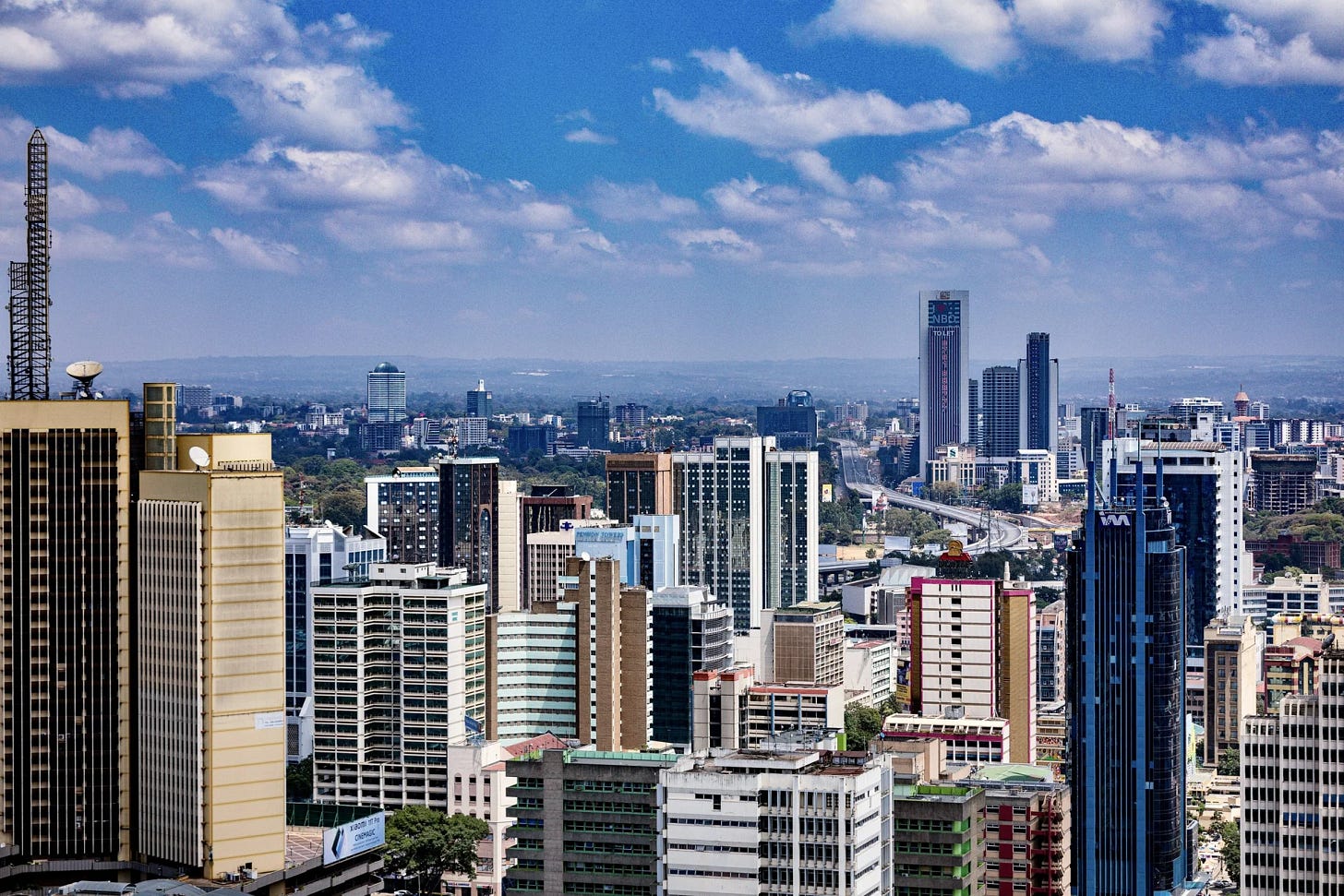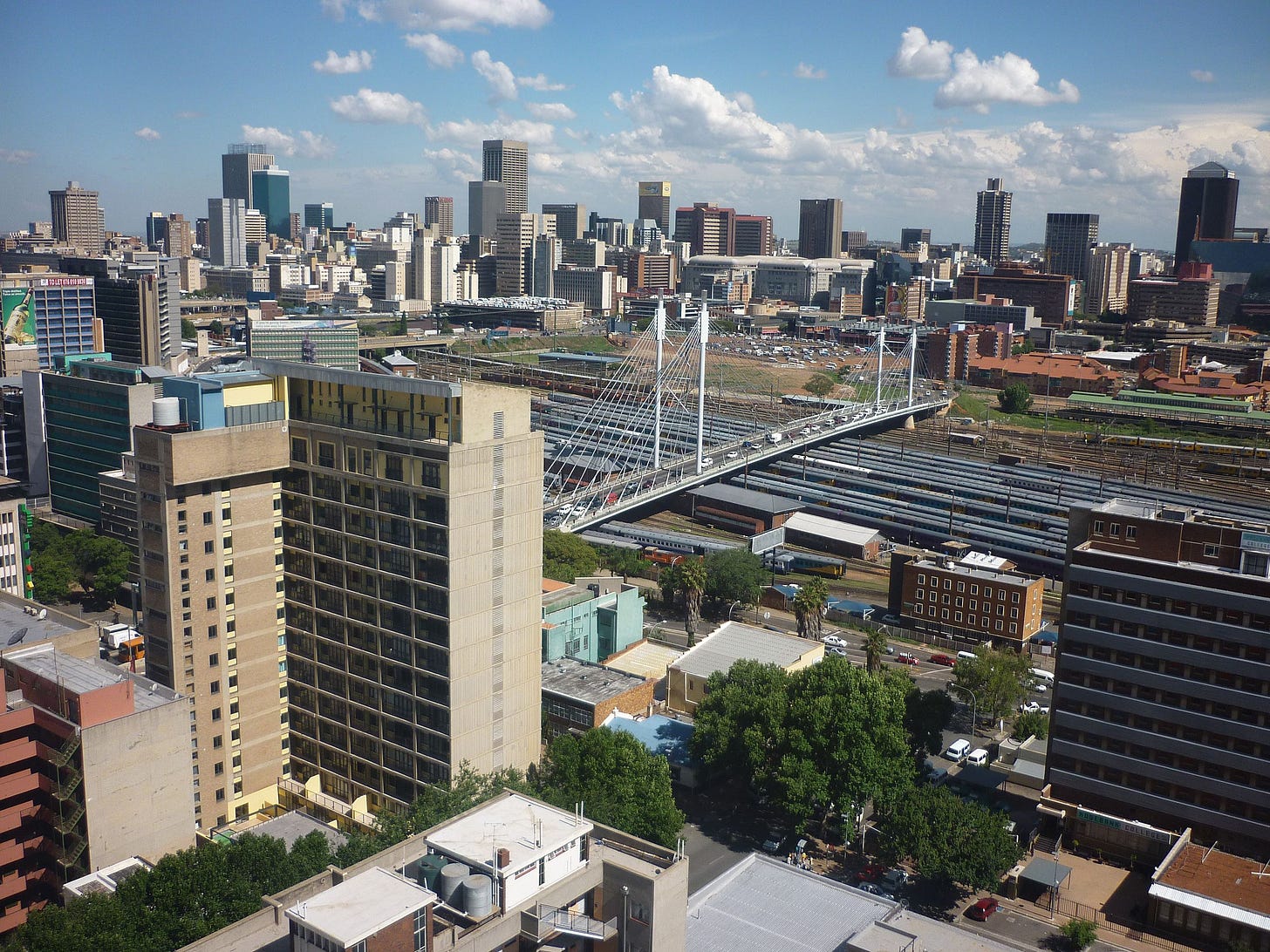South African leading life insurer
Leader in the continent
Reasonable valuation (P/E 10).
Good Digital strategy
Sanlam is a South African company with a footprint across the whole continent and in India. It has 20 million clients and USD $82 billion assets under management.
After the banking crisis, I realise that most full time banking or finance analysts don’t even understand the risks of the banks they cover. So why would my analysis be error proof? Therefore, the only solution is to do analysis that assume a level of risk and uncertainty, and focus on the drivers of value creation, while staying at a high level, and keeping a diversified approach. I would advocate a more concentrated approach if we saw some top western companies at 8-10 times profits.
I kind of take risks by talking up Africa but in the long term, this company will benefit from secular tailwinds.
Here is an overview of their international footprint, from the new JV with Allianz.
So why Africa? I know, I know, the ANC is terrible, a quasi crime syndicate in some state owned enterprises, and South Africa is pretty much a failed state. Electricity is shutting down hours at a time. But it is not an anarchy. The state control is strong with it’s constitution and it’s army, which has some of the best special forces in the world. With the infrastructure failing, private initiative is taking over the country. And private initiative is efficient.
But the main thing is that, a failed state is already priced in terms of GPD and currency. It’s not a risk, it’s there. Everyone knows it, the market knows it, it reflects on earnings, that’s what we pay for.
Africa is a huge continent. All data points to growing GDP in the past, and in the future. Insurance or wealth management penetration is in many countries below 5%.
These are places with millions of people hustling and bustling, waking up at 4-5 in the morning to walk or taxi huge distances to a work location. Just like everywhere else. The will to improve their lives and to survive is strong.
Just to show some scale, here are pictures of Nairobi and Johannesburg.
I could also post pictures of the endless green lands between the cities.
Sanlam’s History
Sanlam was registered on 8 June 1918 as the Suid-Afrikaanse Nasionale Lewens Assuransie Maatskappij Beperk. It was originally serving the Afrikaans community, which are the mostly Dutch origin inhabitants, and was a mutual company.
Sanlam demutualised to list on the JSE Securities Exchange in 1998. It then grew and did many acquisitions, like in Malaysia (2013), Nigeria (2013), India (2016).
One notable one was Saham insurance acquisition: Despite the name sounding similar, Saham is a Morroccan insurance company that was acquired from 2016 to 2018 for USD $1.7B and provided the group with a footprint in several countries in North Africa, Francophone West Africa, and Angola. Salam owns 61% of Saham.
The stock performed well and paid good dividends at first, then stagnated in Rands since 2015. This is while the rand constantly lost earning power. Ex dividends, its about a 10 bagger in 24 years since IPO, while in USD, it was about a 3 bagger versus the rand in that timeframe. The dividend per share got multiplied by 15 in Rands, so about 5 times in real terms. This was in a very challenged economy. Recently, excess covid mortality hurt the profits of Sanlam and thus the stock. Major flooding in Durban hurt last year results in it’s general insurance subsidiary.
Business
“Sanlam is the leading non-banking financial services group on the African continent, with a niche presence in India and Malaysia. We are market leaders in life insurance, general insurance and investment management in our home market of South Africa as well as other countries across the African continent. “
Sanlam Limited is the holding company of the Sanlam Group of companies which operates through subsidiaries, associated companies and joint ventures.
Sanlam has many websites in South Africa alone covering every financial product imaginable. It’s confusing but here is an extract of what they offer on their main webpage.
It has 4 big business segments:
Life insurance: about 55% of the profits.
This segment is about 78% South Africa.
Within these 78% in South Africa, 60% are affluent retail, then we have smaller contribution from mass retail and corporate.
General insurance: about 22% of the profits
This business is both South African and Rest of Africa, with a big presence in Morocco since the Saham acquisition.
For the South African business, it is through a 62% ownership in Santam.
That is a lot of units with similar names, are they running a game on us?
Santam is a listed subsidiary, so we can see actually what their investment book is. In Africa bond yields are high, and bonds are not as safe as in the developed world in terms of beating inflation, so Santam book has more of a varied portfolio consisting of 45% interest bearing instruments and preference shares, 15% equities, 15% Sanlam JV (Sanlam Africa operating businesses-now diversted), 9% funds and 7% others.
Investment management: about 8% of the profits
Asset management is 1.17 trillion rands in 2022 or $63 billion USD, but only about 870 million rands in profits, therefore we can hope for a higher profit margin in the future as we are under 0.1% net profit margin. 2022 was not a good year. At $63 billion USD, we have a large AUM for a market cap of $7 billion USD. This business is largely South African.
Credit and Structuring: about 15% of the profits. This segment is about 2/3rd Indian. Credit solutions, debt structuring. Note on the Indian business: Shriram (acquired in 2011 and increased stake in 2016 and 2019) “is a leading Indian non-banking financial institution that promotes financial inclusion across society’s most vulnerable sectors. Shriram has built a track record in the lending and insurance businesses, offering products and services to the underbanked through its extensive branch network in semi-urban and rural areas. Shriram’s robust ecosystem across its financing and insurance businesses encourages cross-selling. The group is also diversifying its distribution through partnerships and digital platforms. The group’s divisions are Shriram Finance Limited, Shriram Life Insurance and Shriram General Insurance”
Geographical profits distribution overall:
South africa 71%
Asia (mostly India) 14%
Rest of Africa 11%.
Other 3%
Future growth will probably be faster outside of South Africa, an economy that has a higher penetration rate for Sanlam’s products, and that experiences challenges to it’s growth. Sanlam counts on organic growth, which it calls “new business volumes”, and it is positive in 2022, with 5% for life insurance, and 7% for general insurance. However, Sanlam is also doing acquisitions, often small ones within South Africa, so we can have South African growth.
Investments
Bond yields across the company geographies are between 6 and 12% mostly. Therefore there is not a big increase in yields right now like in Europe or the USA. It has been high for a long time and it does not represent a serious opportunity to increase investment income, like it can be for some developed markets insurers like Fairfax, nor does it represent a complete new risk to manage like SIVB, since this is a normal environment for Sanlam.
Here is a snapshot of the holding company investments.
We don’t have more details on the portfolio. Reporting from Sanlam is quite disappointing on that front. There are dozens of mostly repeated financial tables but no details on investments.
Management & Strategy
The majority of shares are owned by the public, it is not a founder led company. However it has a long term approach to business rooted in its long history of being a mutual corporation, as well as the nature of Insurance.
Paul Hanratty, is current CEO since July 2020. He is not a major shareholder but owns some stock. He has a long career in Insurance and worked at the other South African Insurer Old Mutual from 1984 to 2016 ending as COO. He is also a director of telecom company MTN with which Sanlam has a partnership. He is listed as Irish but has no Irish accent so he really is a molded South African by now.
He is very analytical and totally un-promotional and as boring as it gets. He even speaks slowly and feels half asleep and 20 years older than Buffett even thought he is like 40 years younger. That’s the type of person you want to be conservative with risk! I have no doubt about the conservatism of the management.
After this long description, on to strategy, market and my views, for supporters. Note that if you are from South Africa or related and would like the article as a one off, just send me a DM.








